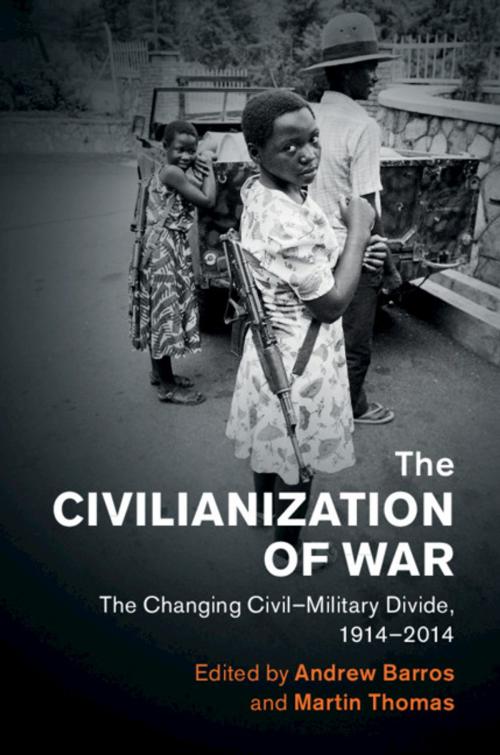The Civilianization of War
The Changing Civil–Military Divide, 1914–2014
Nonfiction, History, Military, Social & Cultural Studies, Political Science| Author: | ISBN: | 9781108640718 | |
| Publisher: | Cambridge University Press | Publication: | August 31, 2018 |
| Imprint: | Cambridge University Press | Language: | English |
| Author: | |
| ISBN: | 9781108640718 |
| Publisher: | Cambridge University Press |
| Publication: | August 31, 2018 |
| Imprint: | Cambridge University Press |
| Language: | English |
Distinguishing between civilians and combatants is a central aspect of modern conflicts. Yet such distinctions are rarely upheld in practice. The Civilianization of War offers new ways of understanding civilians' exposure to violence in war. Each chapter explores a particular approach to the political, legal, or cultural distinctions between civilians and combatants during twentieth-century and contemporary conflicts. The volume as a whole suggests that the distinction between combatants and non-combatants is dynamic and oft-times unpredictable, rather than fixed and reciprocally understood. Contributors offer new insights into why civilian targeting has become a strategy for some, and how in practice its avoidance can be so difficult to achieve. Several discuss distinct population groups that have been particularly exposed to wartime violence, including urban populations facing aerial bombing, child soldiers, captives, and victims of sexual violence. The book thus offers multiple perspectives on the civil–military divide within modern conflicts, an issue whose powerful contemporary resonance is all too apparent.
Distinguishing between civilians and combatants is a central aspect of modern conflicts. Yet such distinctions are rarely upheld in practice. The Civilianization of War offers new ways of understanding civilians' exposure to violence in war. Each chapter explores a particular approach to the political, legal, or cultural distinctions between civilians and combatants during twentieth-century and contemporary conflicts. The volume as a whole suggests that the distinction between combatants and non-combatants is dynamic and oft-times unpredictable, rather than fixed and reciprocally understood. Contributors offer new insights into why civilian targeting has become a strategy for some, and how in practice its avoidance can be so difficult to achieve. Several discuss distinct population groups that have been particularly exposed to wartime violence, including urban populations facing aerial bombing, child soldiers, captives, and victims of sexual violence. The book thus offers multiple perspectives on the civil–military divide within modern conflicts, an issue whose powerful contemporary resonance is all too apparent.















